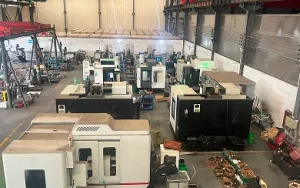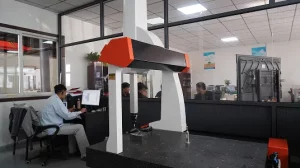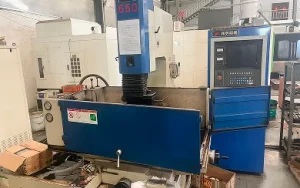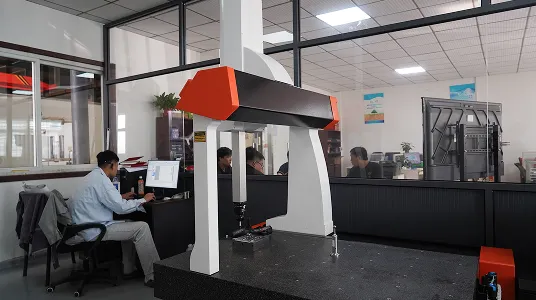Indústria de moldes de injeção: Como a moldagem por injeção de plástico molda a produção global
Peças de plástico inconsistentes, produção lenta e fornecedores pouco fiáveis são desafios que os fabricantes...
Ler mais
Many brands want to launch plastic products fast, but run into high tooling costs, unreliable mold makers, and factories that can’t do small flexible runs. We solve that with professional injection mold design, stable molding, and full OEM/ODM support for global sellers.
Plastic injection molding is a manufacturing process where molten plastic is injected into a mold to create high-precision, repeatable plastic parts for consumer, automotive, home, and e-commerce products.

The injection mold industry is the backbone behind almost every plastic item we touch: storage boxes, kitchen tools, phone accessories, auto clips, medical parts, pet products, and countless e-commerce gadgets. The core idea is simple: you build a mold once, and then the injection molding machine keeps producing the same plastic component thousands or millions of times with the same shape of the mold.
In other words, demand for injection molded products stays high because molding is a manufacturing process that gives repeatability, speed, and clean surface finish at scale.
Let’s make it super clear. Injection molding is a manufacturing process used to produce plastic parts by injecting molten plastic into a steel or aluminum mold cavity. Here’s the simple version:

This injection process is controlled by the machine with temperature, cooling time, injection pressure, and ejection. That’s why injection molding allows factories to produce plastic parts quickly, with accurate dimensions and good surface finish.
Why it matters to buyers: once the mold is done, molding enables very low unit costs. That’s why so many Amazon brands and private label owners use plastic injection molding.
Fast mass production: after the injection mold is ready, the factory can produce plastic parts in large quantity with stable quality.
Flexible customization: you can use plastic injection molding to make the same product in 5 colors, add your logo, or customize the packaging.
OEM/ODM friendly: we can start from your sample, 3D drawing, or even from “I only have a photo from Amazon”.
Compliance-ready: for global markets, we can make sure plastic materials meet RoHS, REACH, FDA, LFGB (depends on product).
Small upgrade, big value: just improving surface finish or changing the mold surface texture can make your Amazon listing look premium.
A lot of failed plastic projects come from bad mold design. Even a strong moldagem por injeção machine cannot fix a low-quality mold. When we do design and manufacturing for clients, we look at:

If you are a brand owner: tell the factory if your product is for the automotive industry, medical industry, or daily consumer use. That way we pick the right injection parameters and type of plastic. Good mold makers always ask about your market before they cut steel.
“A good injection mold is not the cheapest one — it’s the one that keeps producing good parts for the whole lifetime of your project.”
There are many types of injection and types of injection molding used in the plastics industry. Choosing the right one affects cost and performance.
Molding is a manufacturing process that can be adjusted. Molding allows many plastic shapes and molding techniques to be used to produce plastic parts for different industries.
When in doubt, tell us:
We’ll match you to the injection molding manufacturers process that makes sense.

A perfect mold + wrong material = bad product.
Common injection molding materials include PP, ABS, PC, PS, PA, TPE, TPU, POM. Each plastic material has pros and cons:
When we produce plastic parts for Amazon brands, we also look at:
This is part of design for manufacturing. The injection molding design must match the material flow. The molten plastic must fill the mold cavity without sink marks. That’s why used in injection production, we set the right injection pressure and cooling.
How much does an injection mold cost?
It depends on size, complexity, and mold life. A simple household mold may be $800–$2,000. A multi-cavity or automotive mold can be $5,000–$15,000+. Long-life hardened molds cost more but run longer.
What is your MOQ for plastic parts?
Because we work with e-commerce and private label clients, we can support lower MOQs for the first order — sometimes 500–1,000 pcs — as long as the mold is already made.
Can you do packaging, labeling, and FBA prep?
Yes. As an OEM/ODM plastic injection molding factory, we can add logos, color boxes, polybags, label printing, even barcode and carton marking for Amazon.
How long does it take to make the mold?
Most molds take 20–35 days depending on complexity. After T1 sample is approved, mass production is fast.
Can you help me choose material and improve part design?
Yes. That’s part of our injection molding services. We check your drawings and improve for manufacturability.
Do you support global injection and export?
Yes, we already supply to EU/US/ME/SEA markets, so we can prepare compliance documents and shipping-ready packaging.

Peças de plástico inconsistentes, produção lenta e fornecedores pouco fiáveis são desafios que os fabricantes...
Ler mais

Muitas marcas querem lançar produtos de plástico rapidamente, mas deparam-se com custos de ferramentas elevados,...
Ler mais
Responder-lhe-emos no prazo de 24 horas. Se for um caso urgente, adicione WhatsApp/WeChat: +86 ******,. Ou ligue diretamente para +86 ******.
*Respeitamos a sua confidencialidade e todas as informações são protegidas.
Apenas utilizaremos as suas informações para responder ao seu pedido e nunca enviaremos mensagens de correio eletrónico ou mensagens promocionais não solicitadas.